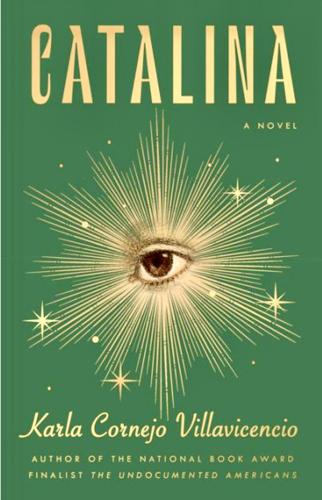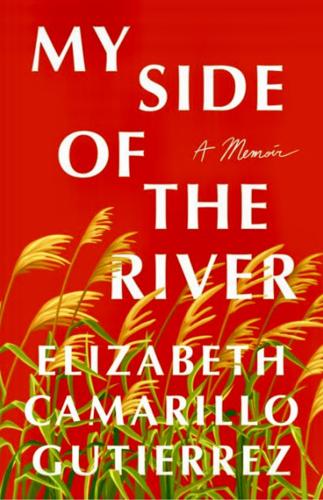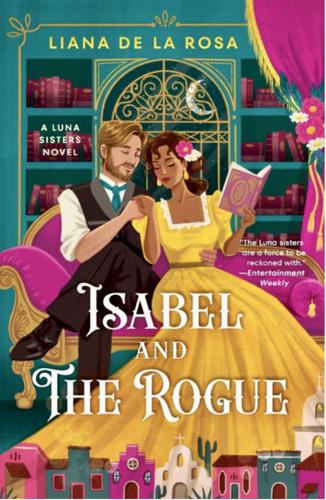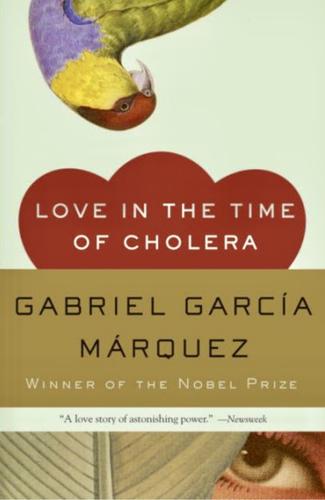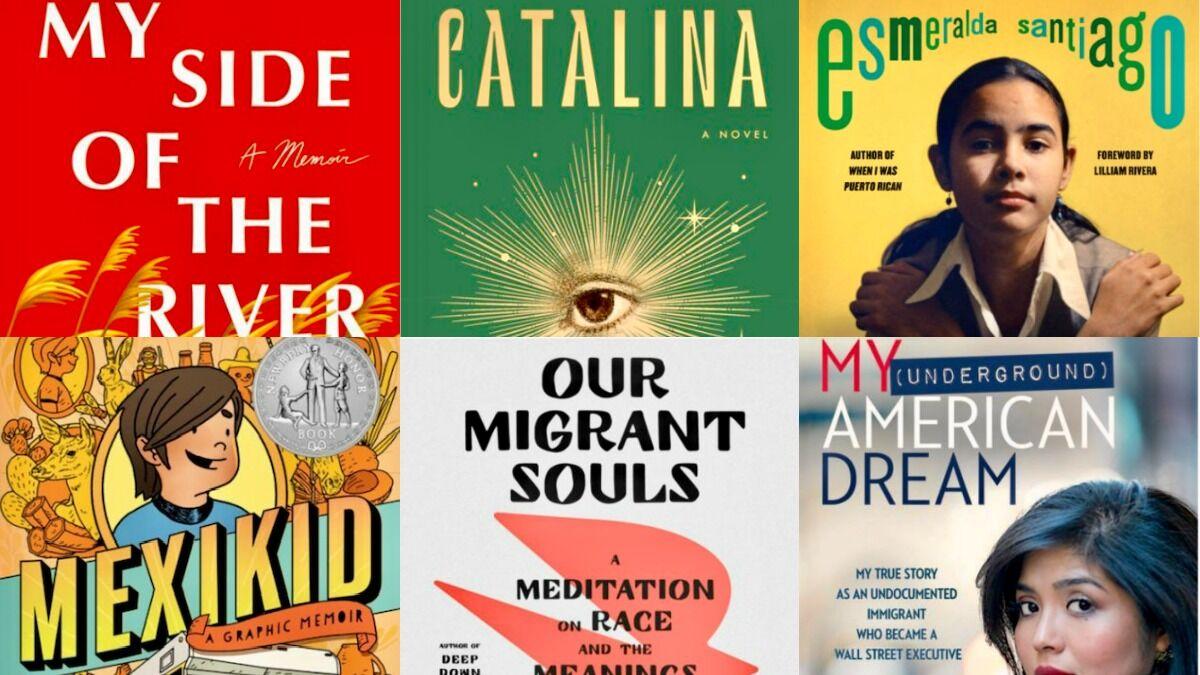Hispanic Heritage Month will begin with observances all over Tucson beginning Sept. 15.
What better time to better understand the Latino experience? If you are looking for a good book to help get you started, volunteers with the Tucson Festival of Books have some suggestions:

“Anita de Monte Laughs Last” by Pulitzer Prize finalist Xochitl Gonzalez was a Reese Witherspoon Book Club pick last spring. It begins when Anita, a rising star in the art world, is found dead in New York City. She has long since been forgotten when — 13 years later — a third-year art history student discovers her story. Also a Latina, Raquel decides to feature Anita in her thesis. Soon, Raquel realizes her own life story is eerily similar to the woman she is writing about. — Hassael Cazesuz

“Catalina” is the first novel by National Book Award finalist Karla Cornejo Villavicencio. Released last month, it features Catalina Ituralde, who fled her home as a child in Latin America. Raised by her undocumented grandparents in Queens, she now finds herself at Harvard, wondering how far a degree can take an undocumented woman in modern America. “Catalina” is a coming-of-age story we will not soon forget. — Thea Chalow

“My Side of the River” is a remarkable memoir by Elizabeth Camarillo Gutierrez, who was born and raised in Tucson. When she was 14, her parents’ visas expired. They were forced to return to Mexico, but wanted Gutierrez and her brother to stay here … where they eventually became homeless. Not only did Gutierrez raise her younger brother, she finished No. 1 in her class at Flowing Wells High School. Now a product manager at Meta in New York City, Gutierrez shared her story at this year’s Festival of Books. — Pamela Treadwell-Rubin

“You Dreamed of Empires” by Álvaro Enrigue is an award-winning look back to 1519, and the day Spanish conquistador Hernán Cortés first entered the city of Tenochtitlan — today’s Mexico City. Later that day, Cortez met Aztec emperor Moctezuma. It became a collision of two worlds, two empires, two languages, and two possible futures. It proved to be the beginning of the end of the Aztec Empire … and the beginning of modern Mexico. — Helene Woodhams

“Our Migrant Souls” by Héctor Tobar is a first-person exploration of the social and historical forces that define what it means to be Latino in the U.S. today. Tobar, who also appeared at this year’s book festival, is the son of Guatemalan immigrants. “Our Migrant Souls” earned him this year’s Zócolo Public Square Book Prize and a $10,000 award. — Meg Files

“Mexikid” by Pedro Martín is a Newberry Honor Award-winning graphic memoir for middle-schoolers. It features a Mexican-American boy who is struggling with his identity before going on a family road trip to bring his abuelito back from Mexico. It becomes a rollicking trip of a lifetime, and young Pedro finds a rare connection to his grandfather. — Kathy Short

“Isabel and the Rogue” by Arizonan Liana De la Rosa is the second book in the Luna Sisters series. A historical romance novel, it features three sisters who are sent from Mexico to England during the French invasion and now must adjust to a very different culture. — Jessica Pryde

“Almost a Woman” by Esmeralda Santiago was a sequel to her first bestselling memoir, “When I Was Puerto Rican.” In this one, Santiago recalls her young adulthood, as she tried becoming “American” while still honoring her family’s roots. Published in 1998, it remains a popular coming-of-age story for young Latinas. — Gay Vernon

“My (Underground) American Dream” is a remarkable memoir by Julissa Arce, who was living the American Dream. A girl who grew up on the outskirts of San Antonio, Arce studied hard, worked hard and became a vice president at Goldman Sachs in New York City. She also had a very big secret: She, like her immigrant parents, was undocumented. Published in 2017, “My (Underground) American Dream” is now being adapted into a TV series starring America Ferrera. — Lynn Wiese-Sneyd

“Bless Me, Ultima” by Rudolfo Anaya, the father of Chicano literature in English. Published in 1999, this was his best-loved novel. Antonio is 6 when Ultima moves in with his family in New Mexico. Antonio learns that she is … special. — Lindy Mullinax

“Gloriana, Presente” by Alyssa Reynoso-Morris is a children’s picture book that was released both in English and Spanish last month. It features Gloriana, a young Puerto Rican girl embarking on her first day of school in the U.S. Enter her abuela, who remembers her own early struggles and guides Gloriana ahead. — Tamara MC

“They Call You Back” by Tim Z. Hernandez continues his search for the families of 28 Mexicans who died in a plane crash into Los Gatos Canyon in 1948 … and reveals his personal connection to the story. Published by University of Arizona Press, “They Call You Back” will release Sept. 17. — Estella Gonzalez

“The Hummingbird’s Daughter” by Luis Alberto Urrea is a novelized story about his great-aunt, Teresita. She could heal the sick, but there was no cure for her and her family’s poverty. Urrea lived in Tucson for a time in the early 2000s while researching and writing the book. — Margie Farmer

“Love In the Time of Cholera” by Gabriel Garcia Marquez was released in 2007, but it remains a much-beloved love story featuring Florentino Ariza and Fermina Daza. When they were young, they fell passionately in love. Fifty years later, they fell in love again. — Lori Riegel
In her home in Commerce City, Betty Rivas styles her daughter’s hair and watches her son brush his teeth before taking them to school in the morning. Her children are well-aware of the house rule – don’t drink the tap water. The predominately Latino community has a long history of environmental contamination and public distrust. Rivas doesn’t want to take a risk with her family, even though the city says its latest issue – the discovery of PFAS in 2018 – has been resolved. “We already knew that we shouldn’t drink the water in Commerce City. But now with this recent PFAS issue, it’s one more reason to be certain that you shouldn’t drink the water,” Rivas said. The Environmental Protection Agency is expected to propose restrictions on harmful “forever chemicals” in drinking water after finding they are dangerous in amounts so small as to be undetectable, but experts say removing them will cost billions, a burden that will fall hardest on small communities with few resources.




